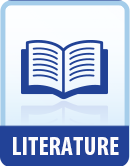|
This section contains 317 words (approx. 1 page at 400 words per page) |

|
His Speed and Strength Summary & Study Guide Description
His Speed and Strength Summary & Study Guide includes comprehensive information and analysis to help you understand the book. This study guide contains the following sections:
This detailed literature summary also contains Bibliography on His Speed and Strength by Alicia Ostriker.
"His Speed and Strength," published in Alicia Ostriker's 1980 collection The Mother/Child Papers, is a mother's meditation on both her son's maturation and the human race's survival. The poem's setting, its references to popular culture, and its conversational diction all belong to contemporary America. The speaker's allusions to mythical goddesses and poet Walt Whitman, however, signal the timeless relevance of the mother's thoughts. In her book of essays, Writing Like a Woman, Ostriker says of the period in which she wrote this poem: "It was impossible [in the 1970s] to avoid meditating on the meaning of having a boy child in time of war, or to avoid knowing that 'time of war' means all of human history." In the poem, the mother watches her son display "speed and strength" on his bicycle and at the town pool. She fancies herself a modern version of the ancient goddesses Niké and Juno as she competes with and protects her son. Through a series of ordinary images, the mother observes the masculine and feminine traits that compose her son's emerging adult identity. The poem implies that our culture opposes these traits at its own peril. On the one hand, the mother is proud of her son's developing speed, strength, and competitivenessall traditionally masculine traits. But, since these traits also suit boys to become war fodder, the mother hopes to nurture in her son a (traditionally feminine) sense of connection to other people and things. If he maintains this connection, his strength may serve constructive, not destructive, ends. The son shows concern for his mother and a sense of connection to other boys as he goes off to play. Seeing both masculine and feminine traits in her son and imagining herself as both a goddess of military victory and a goddess of motherhood, the speaker implies that her son will also successfully connect and integrate diverse traits.
Read more from the Study Guide
|
This section contains 317 words (approx. 1 page at 400 words per page) |

|



